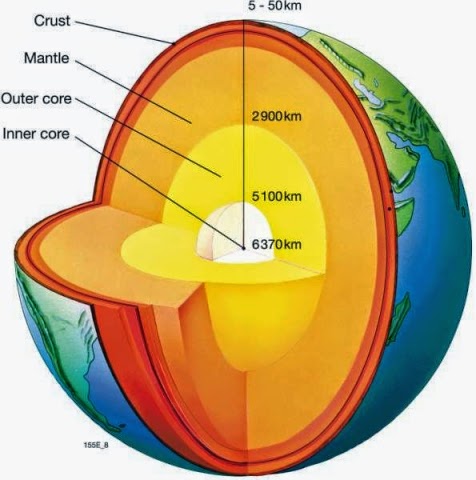
During the earliest stages of the Earth’s formation, the planet’s mantle may have taken the form of a giant magma ocean, being fully or partially molten all the way down to the core-mantle boundary. Though today mantle material is predominantly solid, some scientists suggest that regions of anomalously low seismic wave velocity deep within the mantle, known as ultralow velocity zones (ULVZs), may be indicative of a remnant magma ocean or of partial melting of minerals near the core-mantle boundary. To understand how the early mantle solidified, or whether modern melt could be the source of ULVZs, scientists need to know how various minerals and melts behave under the extreme conditions found near the center of the Earth.
Through the use of various techniques, Thomas et al.analyzed how the density of molten fayalite—an iron-bearing silicate mineral—behaved under pressures up to 161 gigapascals, surpassing those at the core-mantle boundary.
The research adds to previous investigations into the equation of state of fayalite, an expression describing how the material’s density responds to changes in temperature and pressure. The authors find that iron-bearing fayalite behaves similarly to nonferrous silicate liquids during compression and heating.
Based on the measured equation of state, and on the known behavior of other silicate liquids, the authors suggest that the solidification of the Earth’s early mantle would have started near the core-mantle boundary or in the lower mantle.
Based on the current research, the authors are unable to determine whether ultralow velocity zones are necessarily caused by partial melting of the mantle material. They did, however, identify a potential set of liquid compositions that would be gravitationally stable if present.
Reference:
Journal of Geophysical Research – Solid Earth, doi:10.1029/2012JB009403, 2012
Note : The above story is based on materials provided by American Geophysical Union










